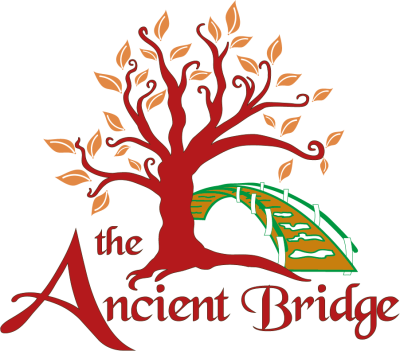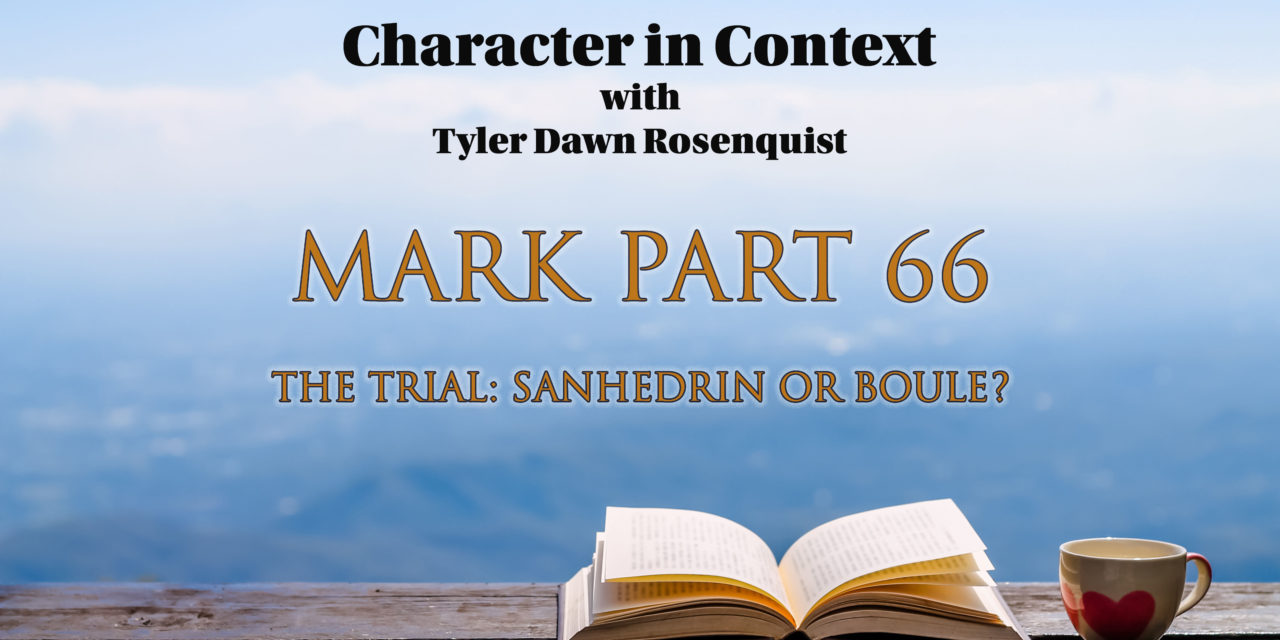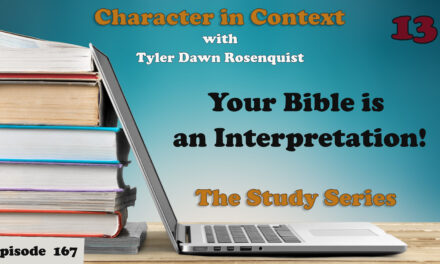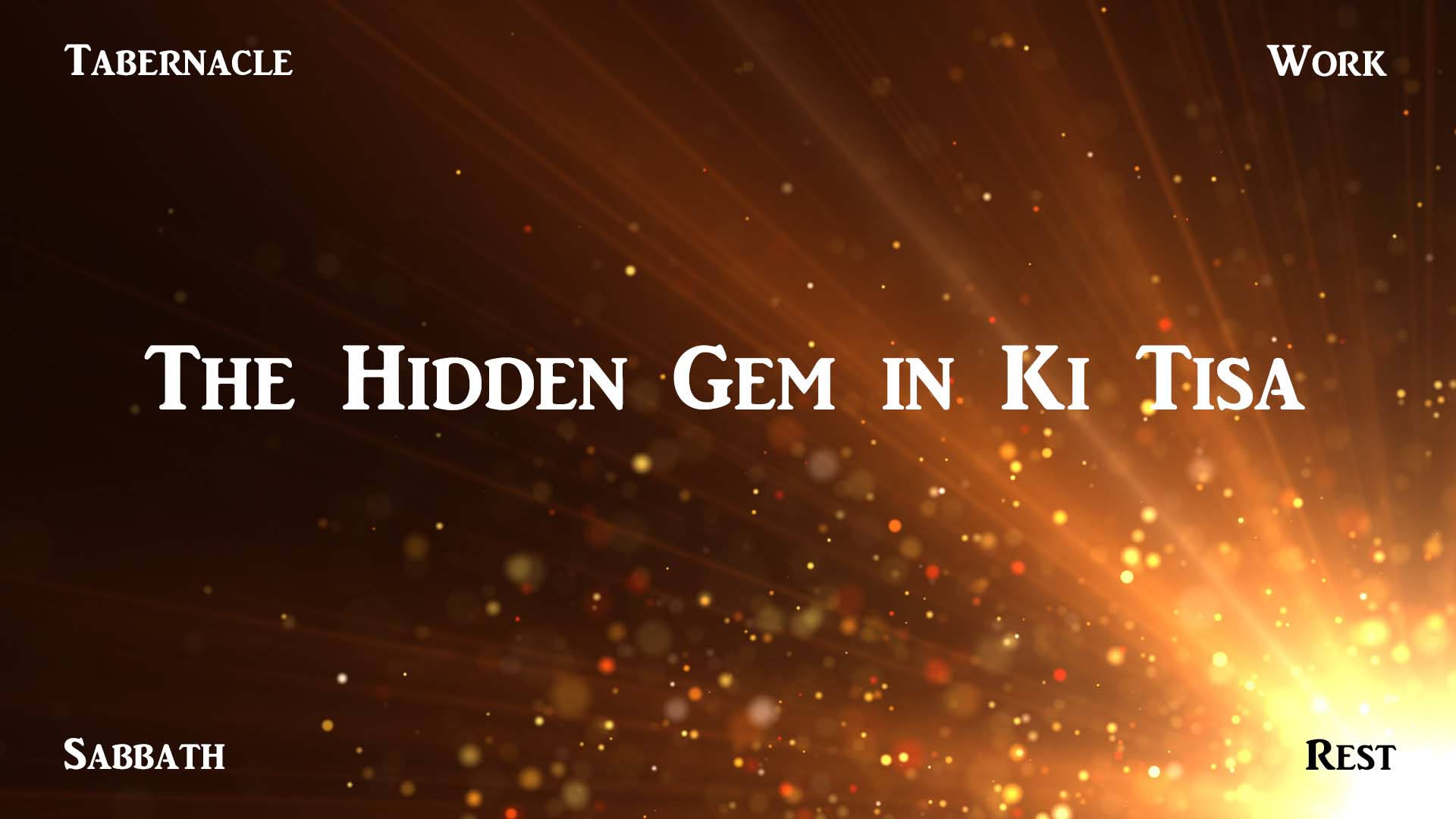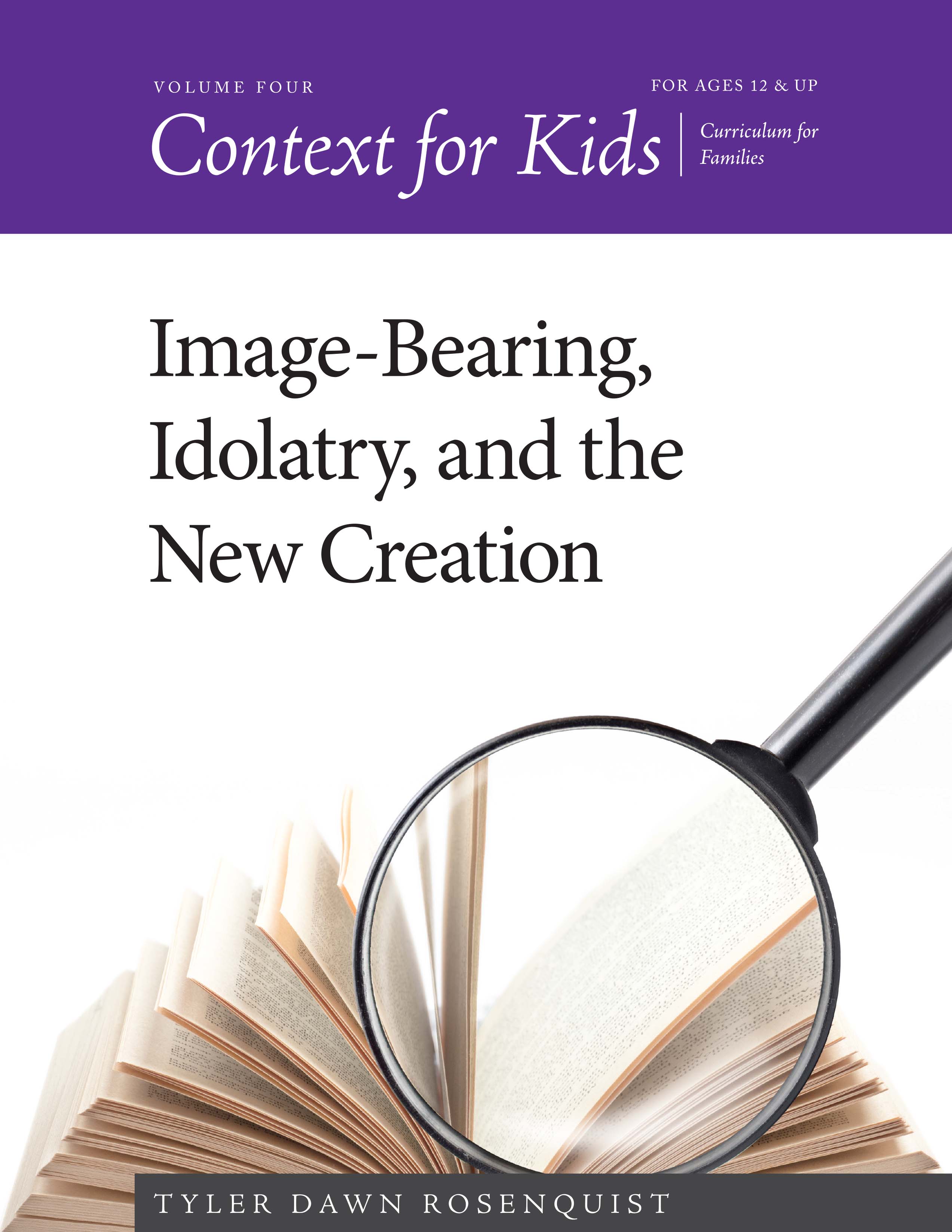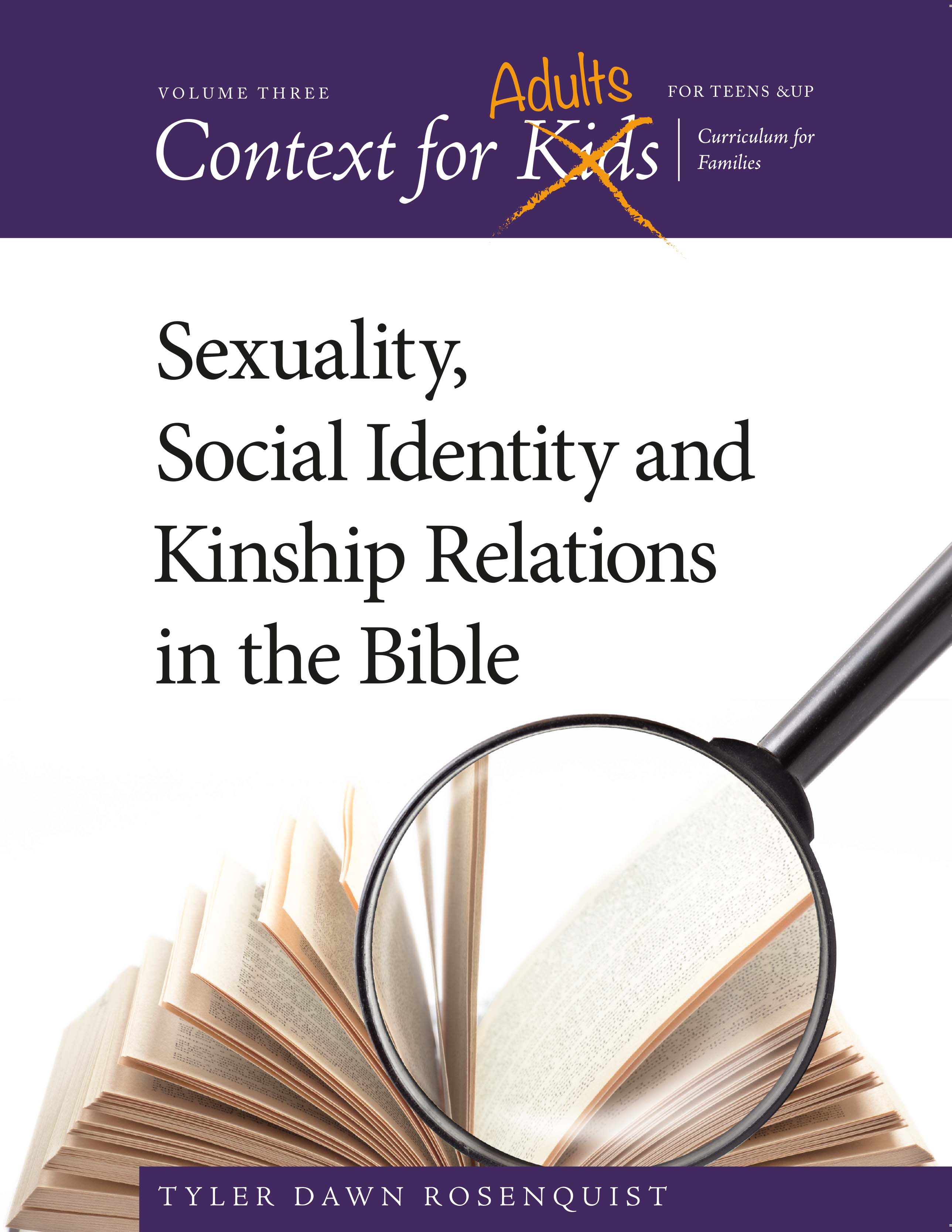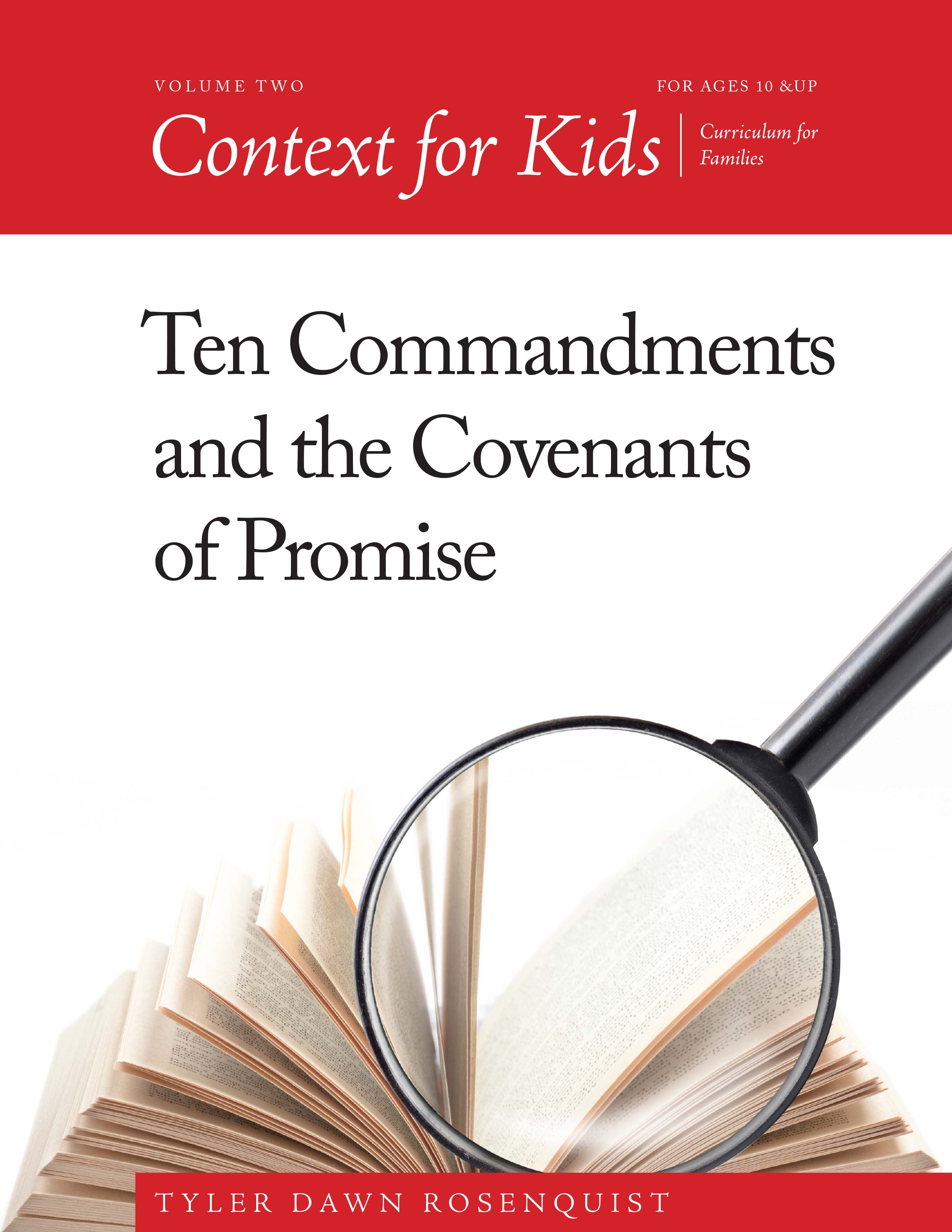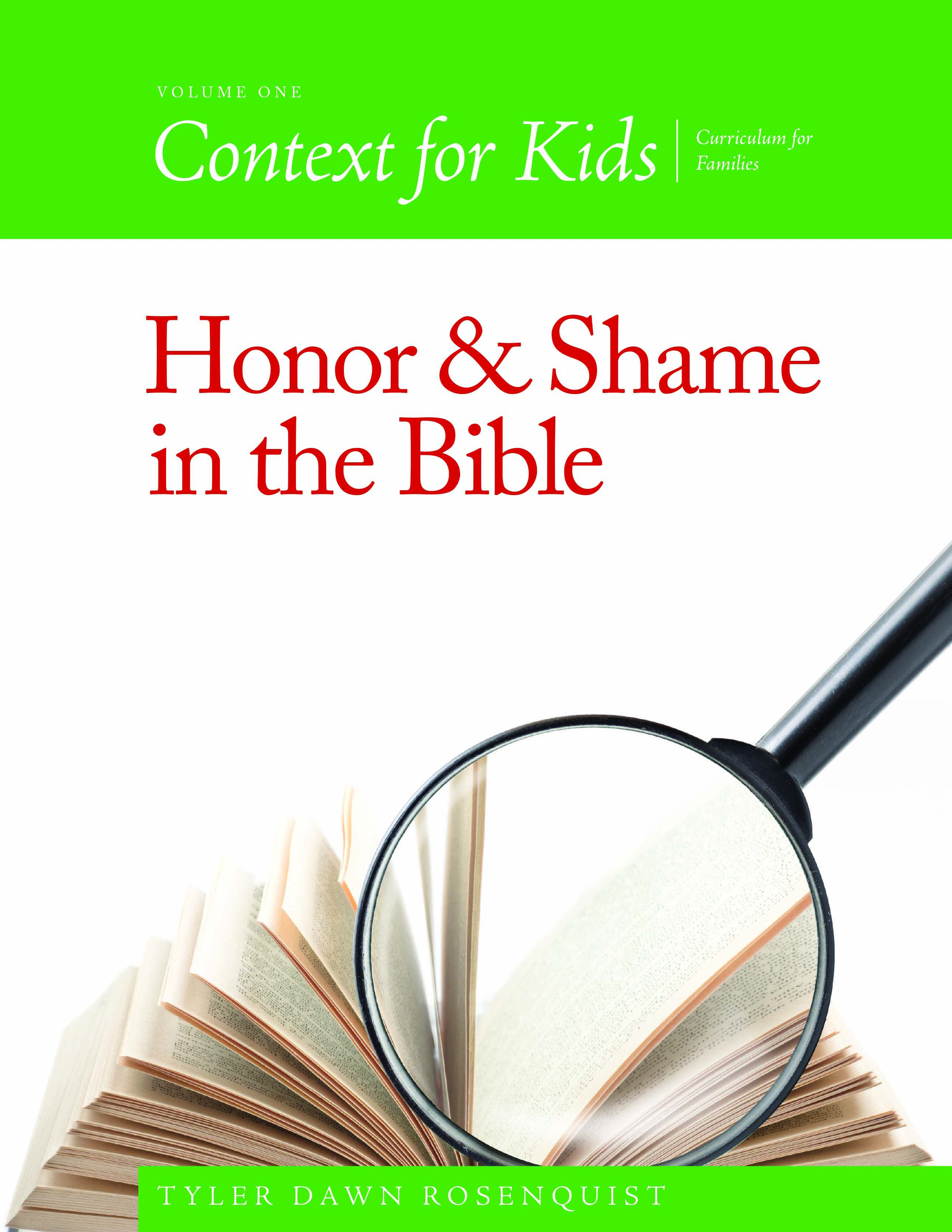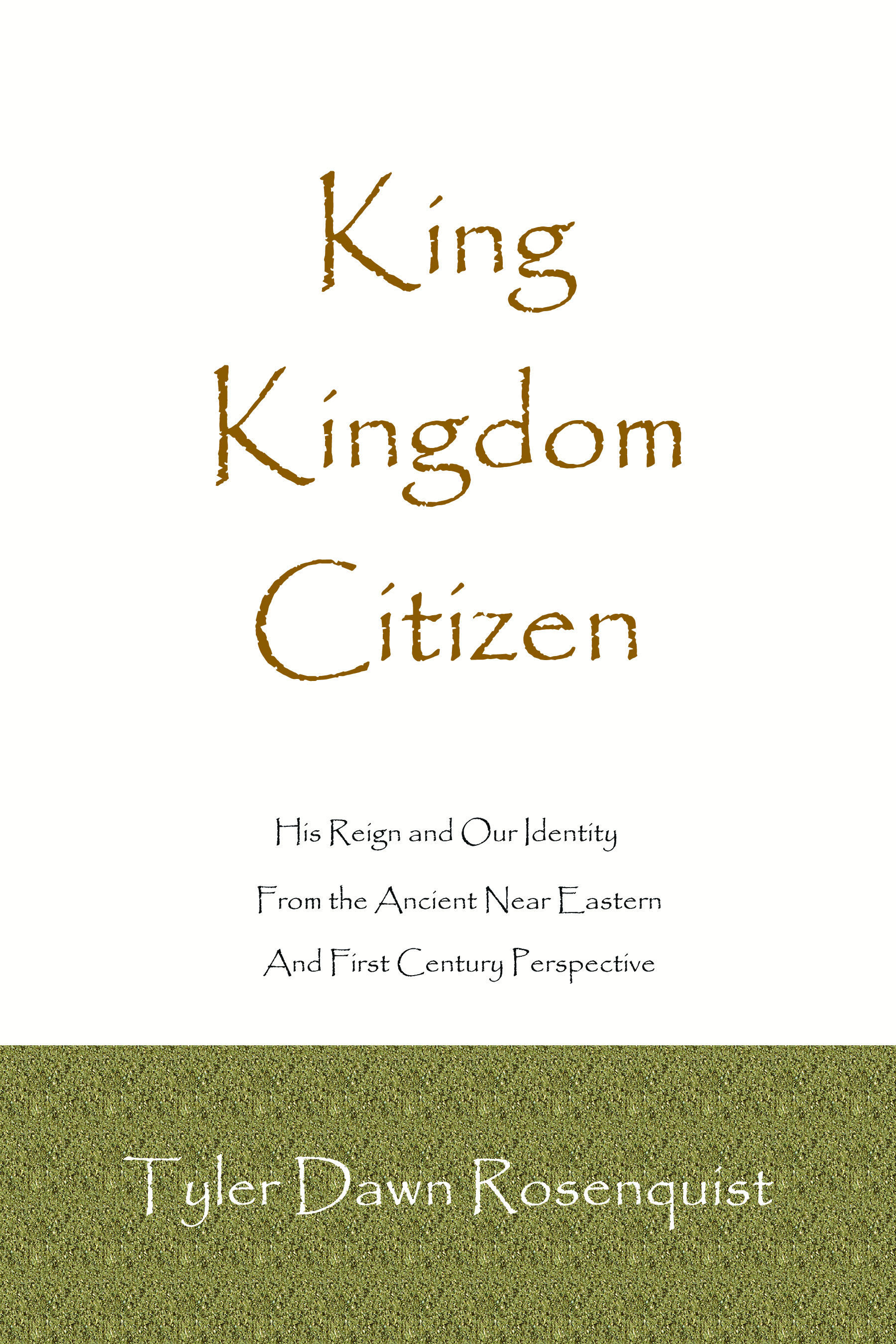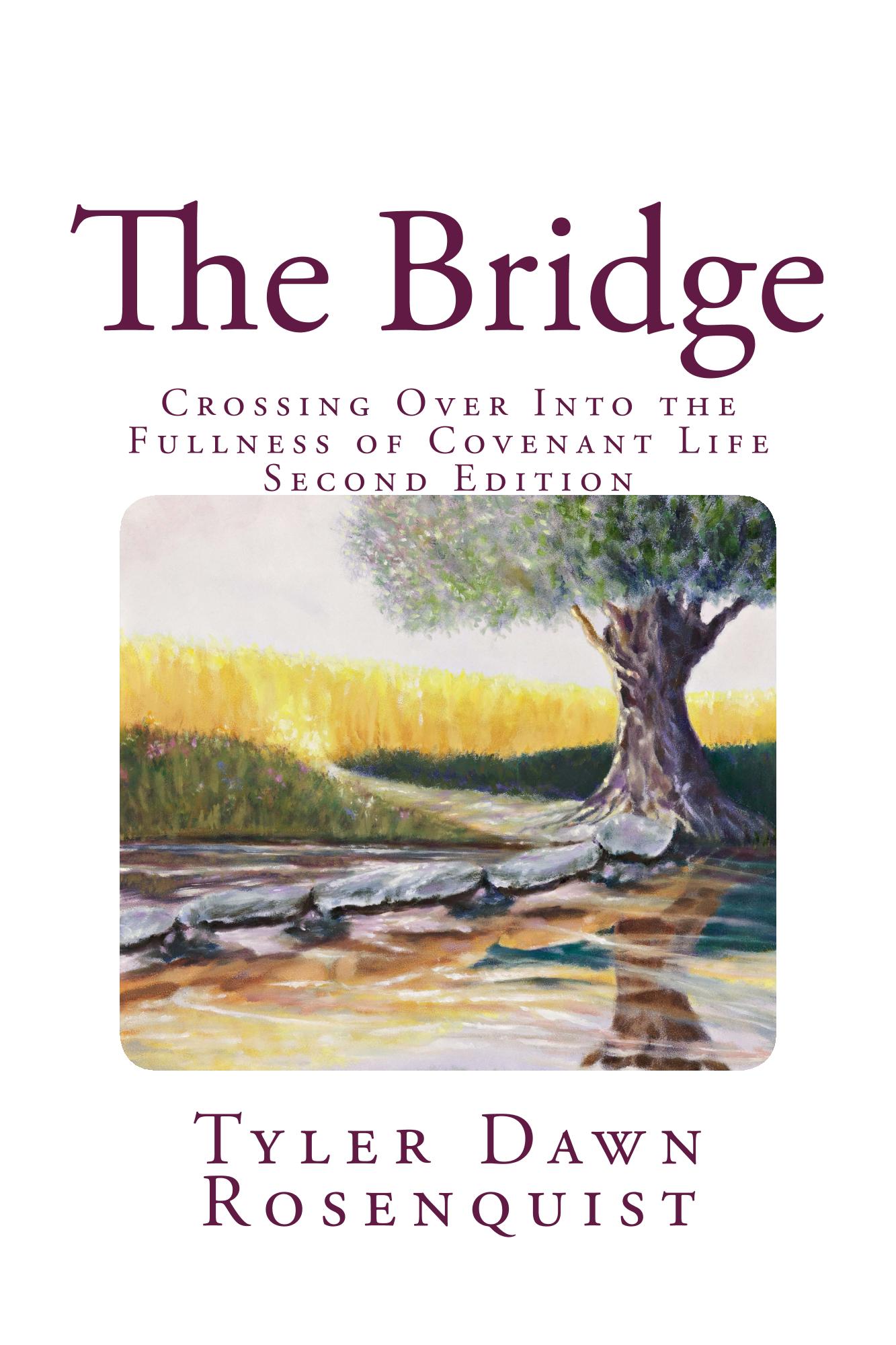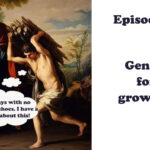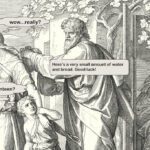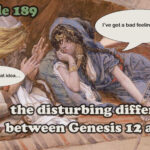Before we go forward with the trial, we need to talk about the difference between the sort of Sanhedrin Josephus chronicled during the first century, and the more Biblical Beth Din described in Mishnah Tractate Sanhedrin. The difference is extremely important for understanding exactly what was going on and whether it was a Kangaroo Court or not.
If you can’t see the podcast player, click here.
53 And they led Jesus to the high priest. And all the chief priests and the elders and the scribes came together. 54 And Peter had followed him at a distance, right into the courtyard of the high priest. And he was sitting with the guards and warming himself at the fire. 55 Now the chief priests and the whole council were seeking testimony against Jesus to put him to death, but they found none. 56 For many bore false witness against him, but their testimony did not agree. 57 And some stood up and bore false witness against him, saying, 58 “We heard him say, ‘I will destroy this temple that is made with hands, and in three days I will build another, not made with hands.’” 59 Yet even about this their testimony did not agree. 60 And the high priest stood up in the midst and asked Jesus, “Have you no answer to make? What is it that these men testify against you?” 61 But he remained silent and made no answer. Again the high priest asked him, “Are you the Christ, the Son of the Blessed?” 62 And Jesus said, “I am, and you will see the Son of Man seated at the right hand of Power, and coming with the clouds of heaven.” 63 And the high priest tore his garments and said, “What further witnesses do we need? 64 You have heard his blasphemy. What is your decision?” And they all condemned him as deserving death. 65 And some began to spit on him and to cover his face and to strike him, saying to him, “Prophesy!” And the guards received him with blows.
This is our eighth week in chapter 14 of the Gospel of Mark and the reason is simply that the setting and context changed radically with the introduction of the Passover narrative, just like it changed radically once Yeshua/Jesus left Galilee and entered into the political and cultural reality of Jerusalem and the Temple. Anyone who believes they can read the Gospel as a contextual unity, treating each part the same, is going to miss a lot and they are also going to read into each section things that are not there. Especially this week, and next since there is too much material to cover. Now we are entering into the legal or maybe illegal realm of the Sanhedrin—or was it a Beit Din of the High Priest’s cronies? It is not crystal clear from the text. Nor is it entirely clear that they were entirely dishonest in their proceedings, not entirely. Added to that the debates over what exactly triggered the blasphemy charge. I am aware that people portray this as very cut and dried but it is anything but and scholars freely acknowledge the paradoxes and difficulties with this trial narrative. Just like life itself, few things are entirely black and white. We prefer for our villains to be entirely without justification or virtue but in this case, we have to settle for our hero being entirely justified and virtuous. What I am not going to do is cover this from the vantage point of honor and shame culture except to make brief comments as things happen, I did a broadcast about that about two years ago and I wrote about it in Context for Kids Volume 1: Honor and Shame in the Bible where I outlined everything that happened and what it all meant.
But, beyond the context, this is a hard section for me to read, and to teach. It isn’t just a story. It is what the love of my life endured—something He didn’t want to endure but did. I read it but I hate it. I often cannot stop myself from bursting into tears. It is hard to talk about how they abused Him. There is nothing clinical or detached about this for me, this is personal. It should be personal.
Hi, I am Tyler Dawn Rosenquist, and welcome to Character in Context, where I teach the historical and ancient sociological context of Scripture with an eye to developing the character of the Messiah. If you prefer written material, I have six years’ worth of blog at theancientbridge.com as well as my six books available on amazon—including a four-volume curriculum series dedicated to teaching Scriptural context in a way that even kids can understand it, called Context for Kids—and I have two video channels on YouTube with free Bible teachings for both adults and kids. You can find the link for those on my website. Past broadcasts of this program can be found at characterincontext.podbean.com and transcripts can be had for most broadcasts at theancientbridge.com. If you have kids, I also have a weekly broadcast where I teach them Bible context in a way that shows them why they can trust God and how He wants to have a relationship with them through the Messiah.
All Scripture this week comes courtesy of the ESV, the English Standard Version but you can follow along with whatever Bible you want. A list of my resources can be found attached to the transcript for Part two of this series at theancientbridge.com. This week we are in Mark 14 again, it is by far the longest chapter of Mark.
This week and next, in addition to the normal commentary list, I am going to be drawing heavily from three sources, the Kehati Commentary on Tractate Sanhedrin, which details legal procedures of the Supreme Court of Israel, albeit from the vantage point of over a hundred and fifty years later, The incredibly excellent Blasphemy and Exaltation in Judaism: The Charge Against Jesus in Mark 14:53-65 by Darrell L Bock and that is very scholarly, not light reading, not for a beginner. And an article entitled Beth Din, Boule, Sanhedrin: A Tragedy of Errors by the late great scholar Ellis Rivkin of Hebrew University and I will link to that article in the transcript as well as his scholar site where you can read more of his scholarly articles for free.
I am going to tell you right now that what we see in the trial of Yeshua, when compared to Tractate Sanhedrin in the Mishnah and according to the Talmudic commentaries as well, it is clearly illegal on a number of levels. From the fact that it is held at night, occurring during a festival, a judgment of a capital crime without waiting long enough, the location, and the fact that it is presided over by a Sadducean High Priest, it reeks to high heaven. Tractate Sanhedrin covers the proceedings of the Sanhedrin court—right? Well, if so then why does the word Sanhedrin only occur in the Tractate three times while the term Beth Din is mentioned nineteen times? And in the supplementary texts, it’s even more striking—Beth Din is mentioned 245 times and Sanhedrin is only mentioned 23 times. The question that Rivkin asks is very important—was this a meeting of the group that would formally meet in the Chamber of Hewn Stone or was this an entirely different sort of tribunal, called a Sanhedrin but different from what is described in the Mishnah?
First off, we see a gathering of all of the chief priests and the elders and the scribes and it is actually possible for all of these to be sitting on the court described by the Mishnah. Verse 55 makes mention of the chief priests and the “whole council” and that word for council is Sanhedrin, which is synedrion (soo-eh-dree-on) in Greek. This is one of many legislative terms that the Jewish people picked up from the Greeks, who were obsessed with all things legal and governmental. It was during the Greek occupation that Torah shifted from being wisdom literature aimed at teaching good judicial practices and mindsets to judges into becoming actual codified legislation. The more Hebraic and ancient Near Eastern way of looking at the Torah would be as wisdom literature and it is more Hellenistic to codify everything and legislate everything down to the minutiae. And I am not against making formal law codes—I think society definitely needs them—but it wasn’t how it was originally written. This is why Yeshua made mention of the ”allowances” given by Moses in Mark 10 when it comes to human hardheartedness. It was during and after Hellenistic times that we see factions, or what Josephus calls “philosophies” sprouting up within Judaism in the form of the Sadducees, Pharisees, and Essenes—and later on, the zealots. When things begin to get nailed down and codified, that’s when people start jockeying for power and position and groups begin posturing and claiming deeper roots than other groups. Each of these groups claimed to be the true transmission from Sinai.
Rivkin points out, brilliantly, that the body described in Tractate Sanhedrin could not have functioned as it was claimed during Second Temple times because there was absolutely no accord among the Pharisees and Sadducees over religious matters. Although they could function together over social issues and political issues, they had no basis for coming together in order to have a unanimous decision on anything. In the Mishnah, we see debate but along the same lines of thought. They agreed on the basics but differed on minor issues. As we see in Acts 5 and 22, when the Pharisees and Sadducees sat together on a council, they ended up in bitter disputes with one another and become unable to render a group decision based on their lack of agreement on religious issues. What happened with Yeshua and the council at the High Priest’s home was a religious interrogation that led to a unanimous agreement.
What is the difference between a Sanhedrin and a Beth Din? Our two first-century sources are the Gospels/Acts and Josephus. When Josephus uses the word Sanhedrin, it does not refer to the ecclesiastical court described in the Mishnah. Instead, it refers to a more generic political gathering drawn together by ruling authorities with some goal in mind. It is, therefore, a Sanhedrin and not The Sanhedrin with set members and rulership. But this is a council that does not operate directly under God or without limitations. That would, instead, be the Beth Din. A Beit Din is what we see described in the Torah as consisting of Judges who are directly authorized by the King of Israel, under the King and the High Priest, to whom the populace owed absolute obedience. This is the authority claimed in Tractate Sanhedrin. Let me get those verses in Deuteronomy for you:
8 “If any case arises requiring decision between one kind of homicide and another, one kind of legal right and another, or one kind of assault and another, any case within your towns that is too difficult for you, then you shall arise and go up to the place that the Lord your God will choose. 9 And you shall come to the Levitical priests and to the judge who is in office in those days, and you shall consult them, and they shall declare to you the decision. 10 Then you shall do according to what they declare to you from that place that the Lord will choose. And you shall be careful to do according to all that they direct you. 11 According to the instructions that they give you, and according to the decision which they pronounce to you, you shall do. You shall not turn aside from the verdict that they declare to you, either to the right hand or to the left. 12 The man who acts presumptuously by not obeying the priest who stands to minister there before the Lord your God, or the judge, that man shall die. So you shall purge the evil from Israel. 13 And all the people shall hear and fear and not act presumptuously again. (Deut 17:8-13)
And this is going to be important when we talk about what the cause of the blasphemy charge was. This was the authority conferred upon the judges of Israel under the leadership of the High Priest/King. They were serving as the direct representatives of Yahweh on earth, having been consecrated and anointed with the holy oil. What we need to understand is that during Second Temple times, there was no authorized and consecrated king from the line of David, nor was there an authorized priest. There hadn’t been a Davidic king since before the exile—the third generation Hasmonean priest-kings were presumptuous in the extreme and wicked to boot—and the High Priestly family during the life of Yeshua and afterwards paid Rome for the position. They were illegitimate as far as being divinely authorized goes. Nowadays, Rabbinic authority often claims this level of legitimacy but there is no King or High Priest and so there does not exist the same mandate. Well, I mean there is one but He is unrecognized for the most part.
So, a Beth Din court was a big serious deal as they claimed authority and inspiration directly from Yahweh. But the factional nature of pre-70 Judaism made it a mess. What does Josephus say about a Sanhedrin?
AND now Caesar, upon hearing the death of Festus (62 CE), sent Albinus into Judea, as procurator. But the king deprived Joseph (Cabi ben Simon) of the high priesthood (in 63 CE), and bestowed the succession to that dignity on the son of Ananus (former high priest, and father in law of Caiaphus), who was also himself called Ananus. Now the report goes that this eldest Ananus proved a most fortunate man; for he had five sons who had all performed the office of a high priest to God, and who had himself enjoyed that dignity a long time formerly, which had never happened to any other of our high priests. But this younger Ananus, who, as we have told you already, took the high priesthood, was a bold man in his temper, and very insolent; he was also of the sect of the Sadducees, who are very rigid in judging offenders, above all the rest of the Jews, as we have already observed; when, therefore, Ananus was of this disposition, he thought he had now a proper opportunity [to exercise his authority]. Festus was now dead, and Albinus was but upon the road; so he assembled the sanhedrim of judges, and brought before them the brother of Jesus, who was called Christ, whose name was James, and some others, [or, some of his companions]; and when he had formed an accusation against them as breakers of the law, he delivered them to be stoned: but as for those who seemed the most equitable of the citizens, and such as were the most uneasy at the breach of the laws, they disliked what was done; they also sent to the king [Agrippa], desiring him to send to Ananus that he should act so no more, for that what he had already done was not to be justified; nay, some of them went also to meet Albinus, as he was upon his journey from Alexandria, and informed him that it was not lawful for Ananus to assemble a sanhedrim without his consent. Whereupon Albinus complied with what they said, and wrote in anger to Ananus, and threatened that he would bring him to punishment for what he had done; on which king Agrippa took the high priesthood from him, when he had ruled but three months, and made Jesus, the son of Damneus, high priest. (Josephus Antiquities 20.9.1)
So, a Sanhedrin in the time of Josephus was not a Beth Din which could pronounce and execute a sentence. A Sanhedrin operated at the discretion of the ruling authorities and could only decide whether or not a case could be bumped up to Rome. In this case, Ananus had not only not been given the authorization by the new procurator to even assemble the council, but Ananus and the council had absolutely no authority to unilaterally convict and execute. And here we see a classic example of the infighting between the Sadducees and Pharisees in that, although the non-Sadduceans were upset about the charges of being antinomian, against the law, they were patently against the proceedings and found them to be unlawful. So, this hastily gathered Sanhedrin did not meet the qualifications to be a Beth Din. And a Beth Din is what the council in the Gospels is often assumed to be because of the mislabeling, Rivkin believes, of the Mishnah Tractate to be referring to something that it was not. He believed that it should have been called Tractate Beth Din based on overwhelming number of references within the documents to Beth Din and the relatively few about Sanhedrin.
Now, this Sanhedrin that Ananus gathered, as it was operating outside the bounds of what was legal and was objected to by leading citizens who had no love for the accused, it is very unlikely that this wasn’t a gathering of like-minded supporters. It was probably an all-Sadducee council because it is very hard to believe that the Pharisees would have consented to such a thing, determined as they historically were to a live and let live policy with the Roman authorities except in the most dire of cases, as when Pilate brought in idolatrous standards to Jerusalem overnight and they were ready to be slaughtered wholesale rather than allow them to stay. In the same way, this charge against Yeshua that He was guilty of blasphemy and all who were there condemned Him. But then we have a problem because in other Scriptures we see that Joseph of Arimathea and Nicodemus were council members—but which council?
In Luke 23:50, Joseph of Arimathea is described as a member of the “council” but the word isn’t related to the Greek for Sanhedrin but instead the Greek for Beth Din, bouleuterion. Joseph was a member of the bouleutes. That’s the group that met in the Chamber of Hewn Stone in the Temple complex, so as to be close enough to the presence of God as to inspire fear and trembling over the justice and righteousness of their decisions. And based on Joseph of Arimathea being a follower of Yeshua and willing to become ceremonially unclean during a festival on His behalf, and not just unclean but with corpse impurity which was the worst and took a seven-day regimen to correct. This isn’t the act of a man who was there and who condemned Yeshua of blasphemy. These are the actions of a man who wasn’t there because the High Priest took it upon himself to hold a hearing for the political purpose of finding something that would allow them to bump up the case to Rome, which is why very little of what we see in this account lines up with Tractate Sanhedrin.
Speaking of which, let’s look at the deviations from Tractate Sanhedrin that we see in Yeshua’s trial:
- The High Priest was clearly in charge. The Beth Din, on the other hand, was ruled over by the Nasi (Prince aka President) and the Av Beth Din (Father of the Beth Din aka Chief Justice). According to the Mishnah, these were teams of two until Hillel the Great and Shammai because in the absence of a King there had to be changes made. In OT times, the King was the head of the court (2.2). Here, we have the High Priest in charge, which never happened in this time period.
- The Beth Din sat in one of three courtrooms placed on or around the Temple Mount, depending on the type of case and how many judges were required to hear it. The most famous of these was located in the Lishkat haGazit (aka The Chamber of Hewn Stones) at the SW corner of the Court of Israel. This was a huge building that could seat seventy-one judges. A case of the magnitude of Yeshua’s, a blasphemy trial that involved the death penalty, would certainly be held here and absolutely not in an upper room of the house of the father of the current High Priest. There was no particular sanctity associated with that location and therefore it was unsuited to such a proceeding. (4.3)
- Capital cases (cases requiring the death penalty upon conviction) were judged by a minimum of 23, but 71 were required to be in attendance in case of a close vote (1.4). False prophet cases required the full Beth Din of 71 to sit in judgment (1.5).
- Capital cases were specifically pursued with the intention of acquittal unless the burden of guilt was very great (4.1) and the preliminary judgment phase opened up with a move to acquit (5.4). Neither of these was the case as testimony shows them determined to convict—if not on the initial charges, which were not proven, then on new charges.
- If an acquittal was not ruled, the Beth Din adjourned for the night and the judges split up into groups of two, who deliberated throughout the night while drinking no wine and eating very little food, before coming back together the next morning. Upon the return, they strove to acquit the accused again (5.5). This clearly did not happen in Yeshua’s trial.
- If the accused was found guilty, before the sentence was carried out, a crier would go out seeking further witnesses in order to try to secure a final acquittal (6.1). Obviously, this never happened and Yeshua was rushed to Herod’s Palace, where Pilate spent the festivals and held court while in Jerusalem.
On the other hand, we mustn’t assume that this was a complete Kangaroo Court where their verdict was assured. As required, they interviewed the witnesses and found them to not be credible as the standards for examination were quite intense. Testimony had to agree on the following details in order to be considered reliable (1) which seven-year period (shemittah) of the Jubilee cycle (Yovel) did the offense occur in. That’s the easy one; (2) in what year of the shemittah cycle did the offense happen; (3) In which month; (4) which day of the month; (5) what hour; (6) in what place (5.1). Now, that would be hard for me to answer correctly on just about anything, honestly. On top of that, all the details had to match up between the witnesses, who were brought in one at a time. I have to say that it is to the Sanhedrin’s credit that the fix wasn’t in because these witnesses could have easily been coached to give the same answers but none of them could agree. Like I said earlier, these guys were being villains but they weren’t entirely acting corruptly. They did their due diligence with the witnesses. Which tends to surprise people. They had a verdict they wanted to arrive at but they didn’t guarantee it.
I believe that Rivkin made his case admirably that this was a temporary political Sanhedrin pulled together in the middle of the night by the High Priest for the purpose of making a case to bring before Pilate for Yeshua’s execution. As such, he could pick and choose whom he wanted to invite from amongst his cronies, people who were likely already guests at his seder, so that he could get the verdict that he wanted in the end without any dissension.
Let’s look at what the Talmud claims really quick in San 43a: The mishna teaches that a crier goes out before the condemned man. This indicates that it is only before him, i.e., while he is being led to his execution, that yes, the crier goes out, but from the outset, before the accused is convicted, he does not go out. The Gemara raises a difficulty: But isn’t it taught in a baraita: On Passover Eve they hung the corpse of Jesus the Nazarene after they killed him by way of stoning. And a crier went out before him for forty days, publicly proclaiming: Jesus the Nazarene is going out to be stoned because he practiced sorcery, incited people to idol worship, and led the Jewish people astray. Anyone who knows of a reason to acquit him should come forward and teach it on his behalf. And the court did not find a reason to acquit him, and so they stoned him and hung his corpse on Passover eve.
Ulla said: And how can you understand this proof? Was Jesus the Nazarene worthy of conducting a search for a reason to acquit him? He was an inciter to idol worship, and the Merciful One states with regard to an inciter to idol worship: “Neither shall you spare, neither shall you conceal him” (Deuteronomy 13:9). Rather, Jesus was different, as he had close ties with the government, and the gentile authorities were interested in his acquittal. Consequently, the court gave him every opportunity to clear himself, so that it could not be claimed that he was falsely convicted. (from https://www.sefaria.org/Sanhedrin.43b.2?lang=bi)
Of course, this doesn’t line up with either the Gospels or with Josephus, our first-century witnesses, but was written just under six hundred years later by the Jewish Rabbinic scholars in Babylon. But it is interesting in that it seeks to justify the verdict by placing it within the context of a Beth Din ruling, yet during a period when we have seen from Josephus and the situation with High Priest Ananus and the execution of James, the brother of Yeshua, that they didn’t have the authority to perform such an independent execution in the first place. They had to go through the established Roman authorities. In Antiquities 18.3.3, even when the later Christian edits are removed, Josephus claims that Yeshua was crucified by the Romans under the leadership of Pontius Pilate instead of the much later Talmudic claim that He was stoned: “About this time there lived Jesus, a wise man, if indeed one ought to call him a man. For he was one who performed surprising deeds and was a teacher of such people as accept the truth gladly. He won over many Jews and many of the Greeks. He was the Messiah. And when, upon the accusation of the principal men among us, Pilate had condemned him to a cross, those who had first come to love him did not cease. He appeared to them spending a third day restored to life, for the prophets of God had foretold these things and a thousand other marvels about him. And the tribe of the Christians, so called after him, has still to this day not disappeared.” (Loebs version)
Although Greek Josephus is almost universally recognized as being tampered with (for reasons that I will detail), there was also discovered in the 1970s an Arabic version of Josephus that doesn’t have the disputed edits and almost certainly reflects what a Jewish retainer of the emperor’s family would have written: “at this time there was wise man who was called Jesus. And his conduct was good, and he was known to be virtuous. And many people from among the Jews and the other nations became his disciples. Pilate condemned him to be crucified and to die. And those who had become his disciples did not abandon his discipleship. They reported that he had appeared to them three days after his crucifixion and that he was alive; accordingly, he was perhaps the Messiah concerning whom the prophets have recounted wonders.” (Retrieved from https://www.jonathanmorrow.org/what-did-the-jewish-historian-josephus-really-say-about-jesus/)
The important thing to note is that the important stuff remains the same. Yeshua was condemned and crucified on the authority of Pontius Pilate. Josephus was not a follower of Yeshua but was a reporter of history and as he was born within a decade of the crucifixion and was a priest, he would certainly be more than familiar with the early believing community and the scandal of the surrounding events. What He wouldn’t have done is to tell someone who was dubbed “divi filius” or the “son of god” (aka his patron, Emperor Titus) that Yeshua was definitely the anointed one who was a threat to Roman rule over his homeland. Things were bad enough already. Josephus instead paints Yeshua as a miracle worker, something that the Romans and all ancient peoples believed in and admired as emissaries of the gods. They weren’t particular about the gods in question as they accepted a great many of them and thought the Jews to be odd and even atheistic for their insistence that there was only one. So, it is believed that a later Christian scribe edited Josephus and because those manuscripts were copied and recopied by the early church, they became the only transmission available until Arabic Josephus popped up fifty years ago.
So, what is it that we have here? Was the trial illegal? Well, not if it wasn’t an actual Beth Din and since it doesn’t reflect almost any of the qualifications, it is doubtful that it constituted a trial at all. Really, it seems more likely that it was a Grand Jury hearing with a stacked jury. If you aren’t familiar with what a Grand Jury is here in America, it is a preliminary hearing where prosecutors bring their evidence in front of a group of randomly selected people in order to see if they can make a case against the accused person for indictment—if yes then they can proceed to trial. Although this was not a random selection but a Sanhedrin convened by the High Priest, it served the same function. Could they find damning enough evidence against Yeshua to bring Him before the only person who had the authority to put Him to death? They knew they only had one shot at this because if they arrested Him and couldn’t make anything stick, they would be in hot water with the populace who was dazzled by Him. And although the arrest in and of itself was shameful in ancient society, even more shameful would be for the elites to fail in pressing a successful case against Him. After all, He had already humiliated them and in the Temple courts, no less. He was rising in esteem and they were falling. If you are familiar with honor/shame cultures, you know that this was a fate worse than death, to be at the pinnacle of your people as far as status goes and to sink lower and lower beneath a poor Galilean of questionable birth. If they had less honor than Yeshua, then they would lose control of the people and during that time people, to lose control of the people meant to lose their position with Rome.
Caiaphus was the son in law of Annas, who was High Priest from the time that Rome took direct power over Judea in 6 CE until 15 CE. He was appointed by Quirinius, the Legate of Roman Syria, and was the very first High Priest officially owned by Rome. Although he was removed from office by Valerius Gratus, Annas was the power behind the priesthood for almost half of the years between 6 and 70 CE. Five of his sons served as high priest but the most successful was Joseph son of Caiaphus, aka Caiaphus of the Bible. He was High Priest for eighteen years, from 18 to 36 CE—the longest lasting of all first-century High Priests because he was a political mastermind and especially combined with his father-in-law Annas. He had great relations with Rome and was very good at keeping the Judeans in check, so when we look at this middle-of-the-night hearing, this is the sort of smart political move we would expect from their combined efforts of keeping the peace and keeping power. Yeshua had to go for the latter and, they suspected, for the former as well. Especially since Yeshua more resembled the Pharisees who were very popular with the people, and really had very little in common with the Sadducees—who were in control of the High Priesthood.
Yeshua had a beef with the Pharisaic “traditions of men” that drew away from the heart of Scripture and missed the point in their striving to achieve legal perfection and Temple-level cleanliness, but Yeshua made reference to the Psalms and the Prophets that the Sadducees did not see as authoritative. Yeshua preached about the resurrection and the world to come, which the Sadducees denied and absolutely flouted with their worldly lifestyle and their oppression of the poor. A figure like Yeshua, clearly appealing to the people’s Messianic hopes—which were a threat to Roman interests and power—endowed with miracle-working authority and whose preaching was just overwhelming the am ha’aretz and even many of the Pharisees, including council members…He just spelled doom to the family of Annas and the chief priests and to those who were currently enjoying the perks of Roman rule.
You need to know that the Sadducees were already unpopular and that the Pharisees were the ones who decided how things were done as far as Temple rituals. As the Sadducees only looked at the Torah as being authoritative to the Temple cultus (don’t think cult in terms of wackiness but cultus in terms of how worship was conducted), they strenuously objected to all the pomp and circumstance that was not directly referenced. For example, they objected to the water pouring ritual at Sukkot and when a Sadducean High Priest Alexander Jannaeus purposefully messed it up, the pilgrims in attendance tried to stone him with their etrogs. Yeshua, on the other hand, actually referenced the ceremony by calling Himself the reality of it in the Gospels—not only at the Passover seder when He referenced the watered-down wine that was His blood of the new covenant, but also at Sukkot in John 7:37. There was more at stake than meets the eye—let’s read the account of the hearing one more time–
53 And they led Jesus to the high priest. And all the chief priests and the elders and the scribes came together. 54 And Peter had followed him at a distance, right into the courtyard of the high priest. And he was sitting with the guards and warming himself at the fire. 55 Now the chief priests and the whole council were seeking testimony against Jesus to put him to death, but they found none. 56 For many bore false witness against him, but their testimony did not agree. 57 And some stood up and bore false witness against him, saying, 58 “We heard him say, ‘I will destroy this temple that is made with hands, and in three days I will build another, not made with hands.’” 59 Yet even about this their testimony did not agree. 60 And the high priest stood up in the midst and asked Jesus, “Have you no answer to make? What is it that these men testify against you?” 61 But he remained silent and made no answer. Again the high priest asked him, “Are you the Christ, the Son of the Blessed?” 62 And Jesus said, “I am, and you will see the Son of Man seated at the right hand of Power, and coming with the clouds of heaven.” 63 And the high priest tore his garments and said, “What further witnesses do we need? 64 You have heard his blasphemy. What is your decision?” And they all condemned him as deserving death. 65 And some began to spit on him and to cover his face and to strike him, saying to him, “Prophesy!” And the guards received him with blows.
